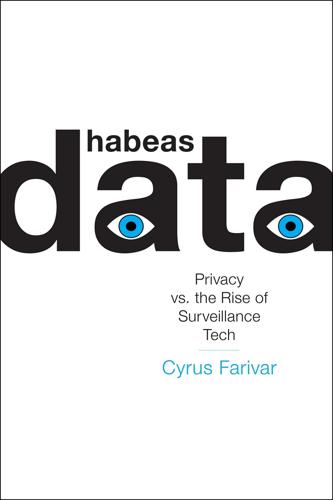
Habeas Data: Privacy vs. The Rise of Surveillance Tech
by
Cyrus Farivar
Published 7 May 2018
“Woman’s Life Saved”: “Woman’s Life Saved Using Vigilant Solutions’ License Plate Recognition (LPR) Data,” Officer Press Release, 2013. Available at: http://www.officer.com/press_release/10939925/womans-life-saved-using-vigilant-solutions-license-plate-recognition-lpr-data. Another proclaims: “Survey: License Plate Recognition Is a Valuable, Well-Regulated Technology,” Officer Press Release, 2013. Available at: http://www.officer.com/press_release/11079856/survey-license-plate-recognition-is-a-valuable-well-regulated-technology. One notable example came: “SB-893 Automated License Plate Recognition Systems: Use of Data,” Bill Status, California Legislative Information, 2017.
…
Its website and press releases herald numerous “success stories” with quotes from law enforcement agencies nationwide. (Access to Vigilant’s database, known as LEARN-NVLS, requires that officers agree to a non-disparagement clause contained within the company’s terms of service.) “Woman’s Life Saved using Vigilant Solutions’ License Plate Recognition (LPR) Data,” one success story touts. Another proclaims: “Survey: License Plate Recognition Is a Valuable, Well-Regulated Technology,” citing a poll of hundreds of law enforcement officers. As a private company, Vigilant Solutions does not disclose financial data, but in 2013, a company official told the San Francisco Business Times that its “products and services are used by more than 2,000 government agencies with 30,000-plus officers, including about two dozen agencies in the Bay Area.”
…
These are essentially specialized: “3M™ Mobile ALPR Camera P634” 3M, 2017. Available at: http://www.3m.com/3M/en_US/company-us/all-3m-products/~/3M-Mobile-ALPR-Camera-P634?N=5002385+8709322+8709393+3292106901&rt=rud. The three largest vendors of LPR: “3M Completes Sale of Tolling and Automated License/Number Plate Recognition Business,” 3M Press Release, June 30, 2017. Available at: http://investors.3m.com/news/press-release-details/2017/3M-Completes-Sale-of-Tolling-and-Automated-LicenseNumber-Plate-Recognition-Business/default.aspx. These companies routinely encourage: “Find Out How to File for Law Enforcement Grants and Funding,” Elsag, 2017.
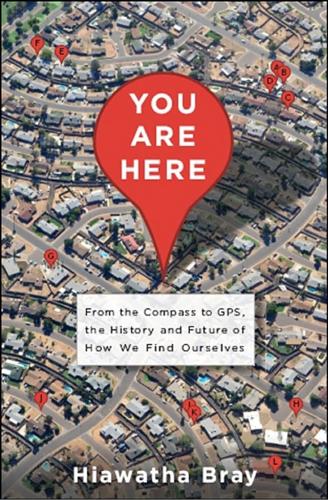
You Are Here: From the Compass to GPS, the History and Future of How We Find Ourselves
by
Hiawatha Bray
Published 31 Mar 2014
,” Wired.com, November 3, 2011, www.wired.com/threatlevel/2011/11/feds-fake-cell-phone-tower/. 15. Cynthia Lum and Linda M. Merola, “Emerging Surveillance Technologies: Privacy and the Case of License Plate Recognition (LPR) Technology,” Judicature (November–December 2012): 119. 16. Jon Campbell, “License-Plate Recognition Has Its Eyes on You,” San Diego CityBeat, February 20, 2013, www.sdcitybeat.com/sandiego/article-11511-license-plate-recognition-has-its-eyes-on-you.html. 17. “Report: RFID Market to Surpass $26B in 2022,” Security Sales and Integration, July 19, 2012, www.securitysales.com/channel/vertical-markets/news/2012/07/19/report-rfid-market-to-surpass-26b-in-2022.aspx.
…
Police forces throughout the United States track millions of vehicles with help from digital systems that record the license plates of passing cars. If you are a driver, your vehicle has probably been tracked this way. A 2009 study found that 37 percent of police agencies of more than one hundred officers were using license-plate recognition systems, and another one-third of departments were planning to get it.15 In an LPR system, police mount cameras along major roads, at intersections, or even on roving squad cars. These cameras give a clear view of the license plates on passing vehicles. The large bold letters and numbers are easily readable by a computer.
…
See Keyhole Markup Language Kobia, David, 182 Korean Air Lines Flight 007, 105–106 Krasner, Norm, 115 Lamarr, Hedy, 124 Land, Edwin, 156 Lapita people, 3 Latitude, 4, 6, 7–8, 12, 50, 86, 87, 92, 106, 113, 119, 127, 170–171, 173, 228 Laussedat, Aimé, 147 Law, 146, 147, 160 Law enforcement, 113–114, 140, 216, 217, 226, 227 Lawrence Livermore Laboratories, 166 Leghorn, Richard, 154–156 Lewis, David, 3 Lewis, Meriwether, 17 License-plate recognition (LPR) systems, 218 Lighted airway system, 33, 34 Lindbergh, Charles, 104–105 Location Privacy Protection Act, 226–227 Lockheed Martin, 167 Loki, 133–134 Longitude, 7–8, 12, 13, 14, 86, 87, 92, 106, 113, 119, 127, 170–171, 173, 228 Logsdon, Tom, 106–107 LORAN, 96–97 Magnavox, 86 Magnetic compasses, 8–13, 20, 26, 48, 50–51, 59, 60, 61, 106 Magnetism, 8–13, 20–21 Mail system, 32–34 Mapping compasses and, 11–13 GPS and, 119 history of, 2–7 hot-spot, 130–134 radio technology and, 29–30 triangulation and, 16–17 wave, 3–4 Wi-Fi, 136, 137–144, 170 world map and, 17–18 See also Internet mapping MapQuest, 175, 176, 179, 187–188 Marconi, Guglielmo, 22–23, 24–25, 45 Marcus, Michael, 124–125 Marine Corps, US, 184 Marketing, 202–205 Markey, Edward, 216 Maskelyne, Nevil, 16 Massachusetts Institute of Technology (MIT), 40, 61, 67, 68, 69, 71, 212 Maximus Planudes, 7 Maxwell, James CLerk, 21 Mayflower, 1, 2, 18 McClure, Frank, 78, 80, 81, 82, 83 McDonnell, Stephen, 144 Meier, Patrick, 181–182, 183 Melvin, Curtis, 170 Mercator, Gerhard, 10, 11–12 Metro-Goldwyn-Mayer, 124 Microsoft, 175, 179, 187 Midway, 79 Miguelez, Andrew, 200–201 Million Map, 17–18 MIT.
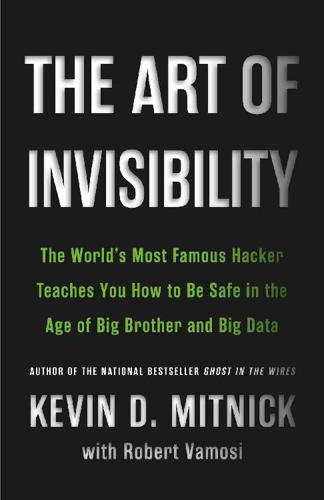
The Art of Invisibility: The World's Most Famous Hacker Teaches You How to Be Safe in the Age of Big Brother and Big Data
by
Kevin Mitnick
,
Mikko Hypponen
and
Robert Vamosi
Published 14 Feb 2017
Sure, I could walk into Walmart and pay cash for a burner phone and one hundred minutes of airtime. Who would know? Well, lots of people would. First, how did I get to Walmart? Did I take an Uber car? Did I take a taxi? These records can all be subpoenaed. I could drive my own car, but law enforcement uses automatic license plate recognition technology (ALPR) in large public parking lots to look for missing and stolen vehicles as well as people on whom there are outstanding warrants. The ALPR records can be subpoenaed. Even if I walked to Walmart, once I entered the store my face would be visible on several security cameras within the store itself, and that video can be subpoenaed.
…
These license-plate photographs are also used to nab red-light runners at problematic intersections. And increasingly, police are using a similar strategy as they drive by parking lots and residential driveways. Police departments passively track your car’s movements every day with automated license plate recognition (ALPR) technology. They can photograph your car’s license plate and store that data, sometimes for years, depending on the police department’s policy. ALPR cameras scan and read every plate they pass, whether the car is registered to a criminal or not. Ostensibly ALPR technology is used primarily to locate stolen cars, wanted criminals, and assist with AMBER Alerts.
…
The system is further linked to a Department of Justice database that keeps track of the license plates of stolen cars and vehicles associated with crimes. As an officer drives, the ALPR technology can scan up to sixty plates per second. If a scanned plate matches a plate in the DOJ database, the officer receives an alert both visually and audibly. The Wall Street Journal first reported on license plate recognition technology in 2012.13 At issue for those who oppose or question ALPR technology is not the system itself but rather how long the data is kept and why some law enforcement agencies will not release it, even to the owner of the car being tracked. It’s a disturbing tool that the police can use to figure out where you’ve been.

The Driver in the Driverless Car: How Our Technology Choices Will Create the Future
by
Vivek Wadhwa
and
Alex Salkever
Published 2 Apr 2017
Data breaches don’t take account of nuance; the devastation of their personal and social lives will be unmitigated by whether a couple was going through a rough patch or whether somebody was just looking with no intention to actually commit infidelity. It’s not just the things we say or do but also the information that is collected about us that makes up our identity and reputation now. On a typical day as you drive home, cameras mounted on top of police cars and road signs are using automated license-plate recognition technology to make a database of virtually all of your car’s movements. Surveillance cameras on buildings and at traffic stops are constantly snapping pictures and recording video of you everywhere you go. As you pull into your driveway, your home automation system makes a record of exactly when you arrived; to deliver the perfect temperature, your Nest thermostat tracks your movements across the house.

The Last Job: The Bad Grandpas and the Hatton Garden Heist
by
Dan Bilefsky
Published 22 Apr 2019
Just about a week after the burglary had first been discovered, the network of surveillance footage finally led them to the tool shop in Edmonton, where CCTV cameras had filmed the distinctive car parked outside, while Collins and Jones bought a new replacement pump to help them complete the job. They were homing in. Automatic license plate recognition cameras, which photograph license plates and are installed all over London to help police fight crime, had also photographed the Mercedes. Armed with a positive identification on the car and the data on its movements, Day was then able to identify the car’s owner: a portly career criminal called Kenny Collins, whom the Firm referred to as “a wombat-thick old cunt.”

What's Yours Is Mine: Against the Sharing Economy
by
Tom Slee
Published 18 Nov 2015
Individual traffic police officers can and do have a pattern of disproportionately stopping black drivers,72 while traffic cameras with automatic license plate recording act irrespective of the race of the driver. So in this way, a change of technology can cut down on specific incidents of racist behavior. Yet we should be careful about drawing general conclusions about the overall effect of any new technology: as criminologist Clive Norris has shown, license plate recognition has now become a way of tracking known individuals as they move around, and it is no surprise who is tracked more and who is tracked less.73 The underlying problem remains: there is still racism in the system, but it is now manifested in different ways. Data acquisition shifts the place where racism happens from the street to the database query.

Radicalized
by
Cory Doctorow
Published 19 Mar 2019
On the other hand, making a new tag wasn’t exactly rocket surgery: #AfraidShouldBeYes, #YShldBFrd. Of course, the Fuckriffers didn’t care, they got all the #YouShouldBeAfraid talk they needed on their private boards. BlueCross BlueShield of Minneapolis broke ground on a new building in an industrial park at the end of its own gated cul-de-sac, with high guard towers, automated license plate recognition systems in a one-mile radius, panic rooms on every floor, and a large staff of 24/7 armed guards. Their shareholder disclosures costed this out and amortized the capital over five years, explaining how the running costs would be covered by a combination of a “security surcharge” on all premiums and a tiny per-share dividend hit.

Succeeding With AI: How to Make AI Work for Your Business
by
Veljko Krunic
Published 29 Mar 2020
NOTE To be on the safe side, you decide to assume that the number of overstays would collapse. Instead of using 300/year, you assume there would be at least 51 overstays/year. You’re hedged by the city if there are 50 or fewer overstays, so 51 overstays/year is the worst-case scenario for you. Figure 6.4 shows the simple ML pipeline you’ll use. Photo from the camera License plate recognition Parking rules Issue citation, if parking rules are violated (remote system) Figure 6.4 A simple ML pipeline for the automated parking meter that takes a picture of the license plate, checks if parking is legal, and issues a citation if not. The examples in this chapter use this pipeline for the analysis.

Reset
by
Ronald J. Deibert
Published 14 Aug 2020
Retrieved from https://www.pogo.org/analysis/2018/09/these-police-drones-are-watching-you/ One vendor of drones has bragged about a 518 percent growth in use by U.S. agencies: Dronefly. (n.d.). Police drone infographic. Retrieved June 16, 2020, from https://www.dronefly.com/police-drone-infographic There are automatic licence plate readers: Howe, R. J. (October 2009). “Privacy impact assessment: Automatic license plate recognition (ALPR).” Royal Canadian Mounted Police (obtained through access to information request by Rob Wipond). Retrieved from https://robwipond.com/ref/RCMP%20ALPR%20PIA.pdf; Parsons, C. (2017, June 13). Who’s watching where you’re driving? Retrieved from https://www.priv.gc.ca/en/blog/20170613 Palantir technology “allows ICE agents to access a vast ‘ecosystem’ of data”: Biddle, S., & Devereaux, R. (2019, May 2).
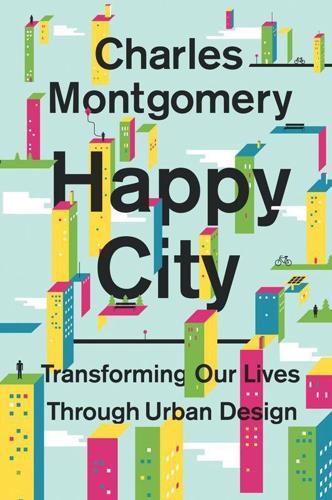
Happy City: Transforming Our Lives Through Urban Design
by
Charles Montgomery
Published 12 Nov 2013
Cities intent on building more variety, freedom, sharing, and sustainability in mobility have no choice but to confront the privilege of private cars. Demand, Supply, and Surprise Some brave cities have tinkered with the economics of demand. In 2003 the London mayor Ken Livingstone adopted the world’s most geographically extensive congestion charge on vehicles entering the heart of the city on weekdays.* The system uses automatic license plate recognition cameras to identify and charge most private vehicles entering the city core, with exemptions for emergency vehicles, taxis, and residents. The fee started at a hefty £5 but has since been bumped to £10. After three years, the charge had reduced traffic in the core by a quarter and was pulling in £122 million a year.
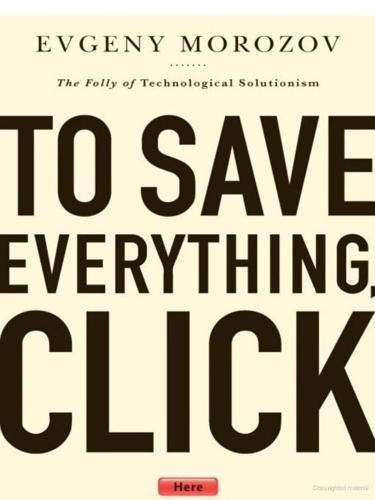
To Save Everything, Click Here: The Folly of Technological Solutionism
by
Evgeny Morozov
Published 15 Nov 2013
Other powerful systems that are currently being built can also be easily reconfigured to suit more predictive demands. Consider the New York Police Department’s latest innovation—the so-called Domain Awareness System—which syncs the city’s 3,000 closed-circuit camera feeds with arrest records, 911 calls, license plate recognition technology, and radiation detectors. It can monitor a situation in real time and draw on a lot of data to understand what’s happening. The leap from here to predicting what might happen is not so great. If PredPol’s “prediction” sounds familiar, that’s because its methods were inspired by those of prominent Internet companies.
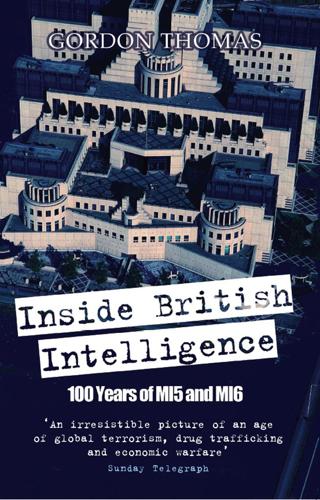
Inside British Intelligence
by
Gordon Thomas
No other nation, except China, equaled such surveillance. Sufficient film to encircle the equator was downloaded daily and analyzed, and “appropriate” images were stored for future use. A Home Office spokesman said, “The question of what is appropriate is decided on a national security basis.” A surveillance network was devoted to automatic license plate recognition: Its cameras tracked vehicles used by suspected terrorists or criminals and had the capability to handle fifty million plate readouts in a day in any weather conditions and transmit them to one of the scores of optical software recognition stations positioned across Britain. From snapshot to target recognition took seconds.

Data and Goliath: The Hidden Battles to Collect Your Data and Control Your World
by
Bruce Schneier
Published 2 Mar 2015
the repossession business: Shawn Musgrave (5 Mar 2014), “A vast hidden surveillance network runs across America, powered by the repo industry,” BetaBoston/Boston Globe, http://betaboston.com/news/2014/03/05/a-vast-hidden-surveillance-network-runs-across-america-powered-by-the-repo-industry. Shawn Musgrave (5 Mar 2014), “Massive license plate location database just like Instagram, Digital Recognition Network insists,” BetaBoston/Boston Globe, http://betaboston.com/news/2014/03/05/massive-license-plate-location-database-just-like-instagram-digital-recognition-network-insists. 2.5 billion records: Vigilant Video (23 Feb 2009), “Site specific preparation sheet for LEARN V.4.0 server installation,” https://www.aclu.org/files/FilesPDFs/ALPR/texas/alprpra_portharthurPD_portarthurtx%20%287%29.pdf.
…
With enough cameras in a city, police officers will be able to follow cars and people around without ever leaving their desks. This is mass surveillance, impossible without computers, networks, and automation. It’s not “follow that car”; it’s “follow every car.” Police could always tail a suspect, but with an urban mesh of cameras, license plate scanners, and facial recognition software, they can tail everyone—suspect or not. Similarly, putting a device called a pen register on a suspect’s land line to record the phone numbers he calls used to be both time-consuming and expensive. But now that the FBI can demand that data from the phone companies’ databases, it can acquire that information about everybody in the US.
…
Microsoft does the same thing to people passing within ten miles of some of its stores; it works with the company NinthDecimal. Sense Networks uses location data to create individual profiles. CORRELATING DIFFERENT DATA SETS Vigilant Solutions is one of the companies that collect license plate data from cameras. It has plans to augment this system with other algorithms for automobile identification, systems of facial recognition, and information from other databases. The result would be a much more powerful surveillance platform than a simple database of license plate scans, no matter how extensive, could ever be. News stories about mass surveillance are generally framed in terms of data collection, but miss the story about data correlation: the linking of identities across different data sets to draw inferences from the combined data.

Future Crimes: Everything Is Connected, Everyone Is Vulnerable and What We Can Do About It
by
Marc Goodman
Published 24 Feb 2015
Previously, such high-tech gear would only have resided in a spy agency or with the FBI, but now, given the exponential drop in pricing of these technologies, even a neighborhood mom can spy on her kids or potentially cheating spouse. In the world of big data, we can even leak our physical location without a bugged mobile phone or GPS tracker hidden in our car. A new technology, known as an automatic license plate reader (ALPR), allows both governments and individuals to use video cameras and optical character recognition to record the locations of cars as they pass from one camera point to another, revealing the real-time movement of any vehicle throughout a city or country with great detail. From Minnesota to New Jersey, and from Ankara to Sydney, hundreds of millions of individual license plate records have been stored.
…
Army, news archive, Mar. 7, 2012, www.army.mil. 46 The longitude and latitude: Ibid. 47 Not only can we be tracked: The product can now be found at http://www.trackingkey.com. 48 From Minnesota to New Jersey: For an excellent review of the social and privacy implications of automatic license plate readers, see the American Civil Liberties Union report You Are Being Tracked: How License Plate Readers Are Being Used to Record Americans’ Movements. 49 Private companies such as Digital Recognition Network: Julia Angwin and Jennifer Valentino-Devries, “New Tracking Frontier: Your License Plates,” Wall Street Journal, Sept. 29, 2012. 50 He then used the data: Ibid. 51 In 2009: Kate Crawford, “San Francisco Woman Pulled Out of Car at Gunpoint Because of License Plate Reader Error,” ACLU (blog), May 15, 2014. 52 To date, Euclid has: Quentin Hardy, “Technology Turns to Tracking People Offline,” Bits (blog), New York Times, March 7, 2013; Gene Marks, “Why the Home Depot Breach Is Worse Than You Think,” Forbes, Sept. 22, 2014. 53 The cloud is here to stay: Frederic Lardinois, “Google Announces Massive Price Drops for Its Cloud Computing Services and Storage, Introduces Sustained-Use Discounts,” TechCrunch, March 25, 2014. 54 All the major cloud service providers: Keir Thomas, “Microsoft Cloud Data Breach Heralds Things to Come,” PCWorld, Dec. 23, 2010; Ed Bott, “Dropbox Gets Hacked … Again,” ZDNet, Aug. 1, 2012. 55 In late 2014, hundreds: Daisuke Wakabayashi and Danny Yadron, “Apple Denies iCloud Breach,” Wall Street Journal, Sept. 2, 2014. 56 As a result, the plans: Jaikumar Vijayan, “Classified Data on President’s Helicopter Leaked via P2P, Found on Iranian Computer,” Computerworld, March 2, 2009. 57 In fact, there are more than a hundred: Threat Working Group of the CSIS Commission on Cybersecurity, “Threats Posed by the Internet.” 58 Every single day, the NSA: Dana Priest and William M.

Practical Python and OpenCV
by
Adrian Rosebrock

Rule of the Robots: How Artificial Intelligence Will Transform Everything
by
Martin Ford
Published 13 Sep 2021
While Xinjiang remains ground zero for the Chinese surveillance state, the technologies tested and perfected there are rapidly spreading across the country. Police departments often combine facial recognition systems with other technologies such as mobile phone scanners, which capture a unique identification code for every phone that passes through the vicinity, car license plate readers and fingerprint recognition technology to weave an Orwellian tapestry that is becoming increasing integrated over time. Algorithms can often, for example, match phone identification codes with faces, creating a comprehensive tracking and identification system for individuals. Such systems are installed in neighborhoods or at the entrances of specific buildings known to be associated with higher crime levels.

The Loop: How Technology Is Creating a World Without Choices and How to Fight Back
by
Jacob Ward
Published 25 Jan 2022

The AI Economy: Work, Wealth and Welfare in the Robot Age
by
Roger Bootle
Published 4 Sep 2019
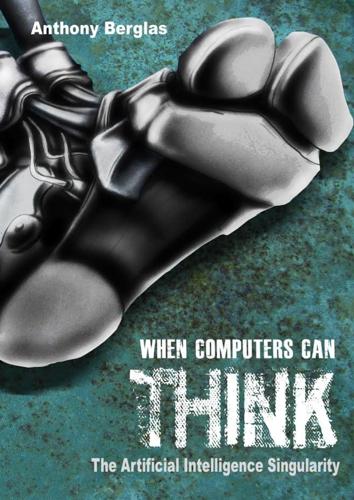
When Computers Can Think: The Artificial Intelligence Singularity
by
Anthony Berglas
,
William Black
,
Samantha Thalind
,
Max Scratchmann
and
Michelle Estes
Published 28 Feb 2015
In the past horrific crimes against children and adults could be very difficult to solve. Today, if a serious crime is committed, such as the disappearance of a child, the police quickly query mobile phone towers to produce a list of everyone that was in the vicinity at the time. License plate readers and facial recognition technology can already monitor the movements of cars and people. Voice recognition systems will soon be able to analyze million of hours of phone and other conversations. A major drive for this surveillance is to prevent terrorist attacks, which kill a few people every few years in western countries.
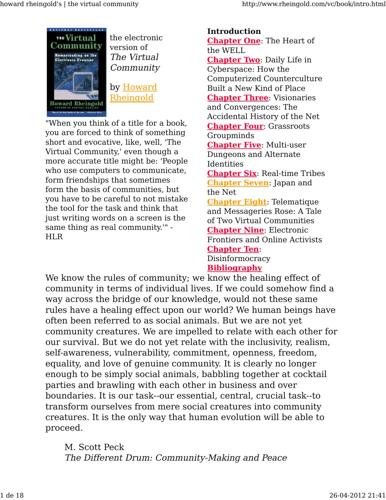
Howard Rheingold
by
The Virtual Community Homesteading on the Electronic Frontier-Perseus Books (1993)
Published 26 Apr 2012
Computer and communications technologies outside the military sphere are applied with great effectiveness by public and private police agencies. One example that I saw with my own eyes is suggestive of the range of goodies available to police forces: at a laboratory outside Tokyo, I saw a video camera on a freeway zero in on the license plate of a speeder, use shape-recognition software to decode the license number, and transmit it to police computers, where a warrant search could be conducted. No human in the loop-- the camera and computer determine that a crime has been committed and instantly identify the suspect. Just as grassroots citizens' networks have been interconnecting into a planetary Net, police information networks have been evolving as well.

The Coming Wave: Technology, Power, and the Twenty-First Century's Greatest Dilemma
by
Mustafa Suleyman
Published 4 Sep 2023

Snowden's Box: Trust in the Age of Surveillance
by
Jessica Bruder
and
Dale Maharidge
Published 29 Mar 2020
What would prevent them from making a similar request involving an Amazon Echo or any other smart device with a microphone or sensors? The spread of networked devices — the so-called internet of things — could someday give police easy access to the most private parts of our lives. Law enforcement already has a formidable array of surveillance technologies, ranging from license plate readers to the cell site simulators nicknamed “stingrays” that mimic mobile phone towers to facial recognition and access to credit card transactions — an area of data that is mushrooming as some areas of the country move towards a cashless economy. Meanwhile, Amazon has quietly been licensing its own facial recognition software, called Rekognition, to law enforcement agencies.

The Patient Will See You Now: The Future of Medicine Is in Your Hands
by
Eric Topol
Published 6 Jan 2015
If you are willing to give up privacy altogether, the mobile app Placed gives you coupons for providing information on what store you’re in. As you get out on the city streets and public places, there’s now an unprecedented array of sensors, CCTVs, and vast wireless networks that are set up to detect your motion, sense your car, read your license plate, and capture key biometric information such as facial recognition. Then there are all the low-cost satellites from above so that “all of the Earth will be held to a mirror, in near real time, at an increasing granularity of visual infrared and other kinds of data.”33b Wow, are we ever being watched. Not just being watched but also identified.

The Pentagon's Brain: An Uncensored History of DARPA, America's Top-Secret Military Research Agency
by
Annie Jacobsen
Published 14 Sep 2015
The system of systems being built by DARPA was long term, and had ambitious, well-funded goals. The ultimate objective for Combat Zones That See was to be able to track millions of people and cars as they moved through urban centers, not just in Iraq but in other urban areas that potentially posed a threat. Cars would be tracked by their license plates. Human faces would be tracked through facial recognition software. The supercomputers at the heart of the system would process all this information, using “intelligent computer algorithms [to] determine what is normal and what is not,” just as the Total Information Awareness office proposed. Combat Zones That See was similar to TIA’s needle-in-a-haystack hunt.
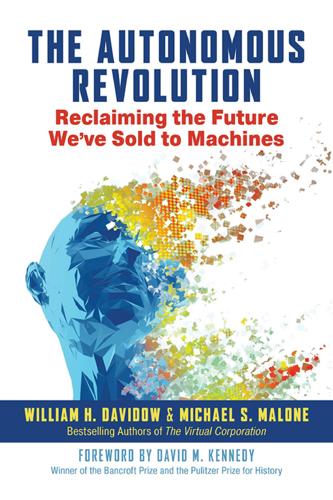
The Autonomous Revolution: Reclaiming the Future We’ve Sold to Machines
by
William Davidow
and
Michael Malone
Published 18 Feb 2020
“More Data and Surveillance Are Transforming Justice Systems,” The Economist,, June 2, 2018, https://www.economist.com/technology-quarterly/2018-05-02/justice. 3. Shoshana Zuboff, The Age of Surveillance Capitalism (New York: Public Affairs, 2019), 282–290. 4. Surveillance-Video, product catalog, https://www.surveillance-video.com/license-plate-cameras/ (accessed June 27, 2019). 5. Will Oremus, “Forget Security Cameras. Stores Are Using Face Recognition to See If You’re a Shoplifter,” Slate, November 24, 2015, http://www.slate.com/blogs/moneybox/2015/11/24/stores_are_using_face_recognition_to_catch_shoplifters.html (accessed June 27, 2019). 6. JenerationTech, “How Facial Recognition Will Impact the Shopping Industry,” Kairos, November 22, 2016, https://www.kairos.com/blog/how-facial-recognition-will-impact-the-shopping-industry (accessed June 27, 2019). 7.

Artificial Intelligence: A Guide for Thinking Humans
by
Melanie Mitchell
Published 14 Oct 2019
As Google’s Blaise Agüera y Arcas remarked, “It’s been a sort of gold rush—attacking one problem after another with the same set of techniques.”13 Using ConvNets trained with deep learning, image search engines offered by Google, Microsoft, and others were able to vastly improve their “find similar images” feature. Google offered a photo-storage system that would tag your photos by describing the objects they contained, and Google’s Street View service could recognize and blur out street addresses and license plates in its images. A proliferation of mobile apps enabled smartphones to perform object and face recognition in real time. Facebook labeled your uploaded photos with names of your friends and registered a patent on classifying the emotions behind facial expressions in uploaded photos; Twitter developed a filter that could screen tweets for pornographic images; and several photo- and video-sharing sites started applying tools to detect imagery associated with terrorist groups.
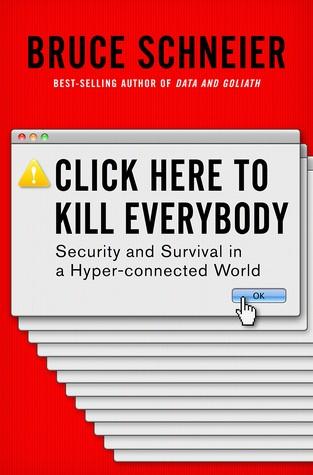
Click Here to Kill Everybody: Security and Survival in a Hyper-Connected World
by
Bruce Schneier
Published 3 Sep 2018
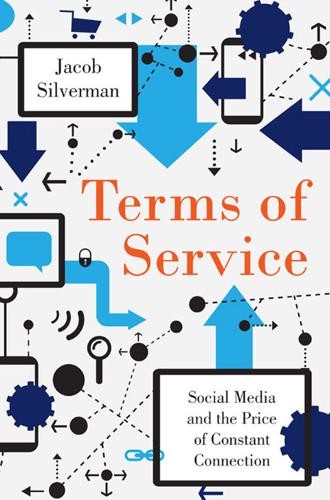
Terms of Service: Social Media and the Price of Constant Connection
by
Jacob Silverman
Published 17 Mar 2015

Radical Technologies: The Design of Everyday Life
by
Adam Greenfield
Published 29 May 2017

The Best of 2600: A Hacker Odyssey
by
Emmanuel Goldstein
Published 28 Jul 2008

Eastern USA
by
Lonely Planet
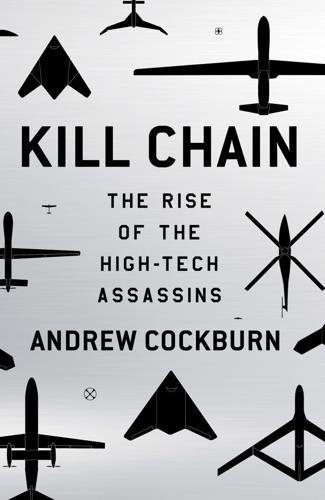
Kill Chain: The Rise of the High-Tech Assassins
by
Andrew Cockburn
Published 10 Mar 2015

The Future of the Internet: And How to Stop It
by
Jonathan Zittrain
Published 27 May 2009
(The site was rarely updated with new information, and it became entangled in a larger lawsuit lodged under the U.S. Freedom of Access to Clinic Entrances Act.77 The site remains accessible.) An associated venture solicits the public to take pictures of women arriving at clinics, including the cars in which they arrive (and corresponding license plates), and posts the pictures in order to deter people from nearing clinics.78 With image recognition technology mash-ups, photos taken as people enter clinics or participate in protests can be instantly cross-referenced with their names. One can easily pair this type of data with Google Maps to provide fine-grained satellite imagery of the homes and neighborhoods of these individuals, similar to the “subversive books” maps created by computer consultant and tin-kerer Tom Owad, tracking wish lists on Amazon.79 This intrusion can reach places that the governments of liberal democracies refuse to go.

Homeland: The War on Terror in American Life
by
Richard Beck
Published 2 Sep 2024

Nexus: A Brief History of Information Networks From the Stone Age to AI
by
Yuval Noah Harari
Published 9 Sep 2024
They also matched a distinctive Knights of Columbus jacket he wore on January 6 to the jacket he wore on a different occasion, which was captured in a YouTube clip. The phone registered in his mother’s name was geolocated to inside the Capitol, and a license plate reader recorded his car near the Capitol on the morning of January 6.27 Facial recognition algorithms and AI-searchable databases are now standard tools of police forces all over the world. They are deployed not only in cases of national emergencies or for reasons of state security, but for everyday policing tasks. In 2009, a criminal gang abducted the three-year-old Gui Hao while he was playing outside his parents’ shop in Sichuan province, China.

USA Travel Guide
by
Lonely, Planet